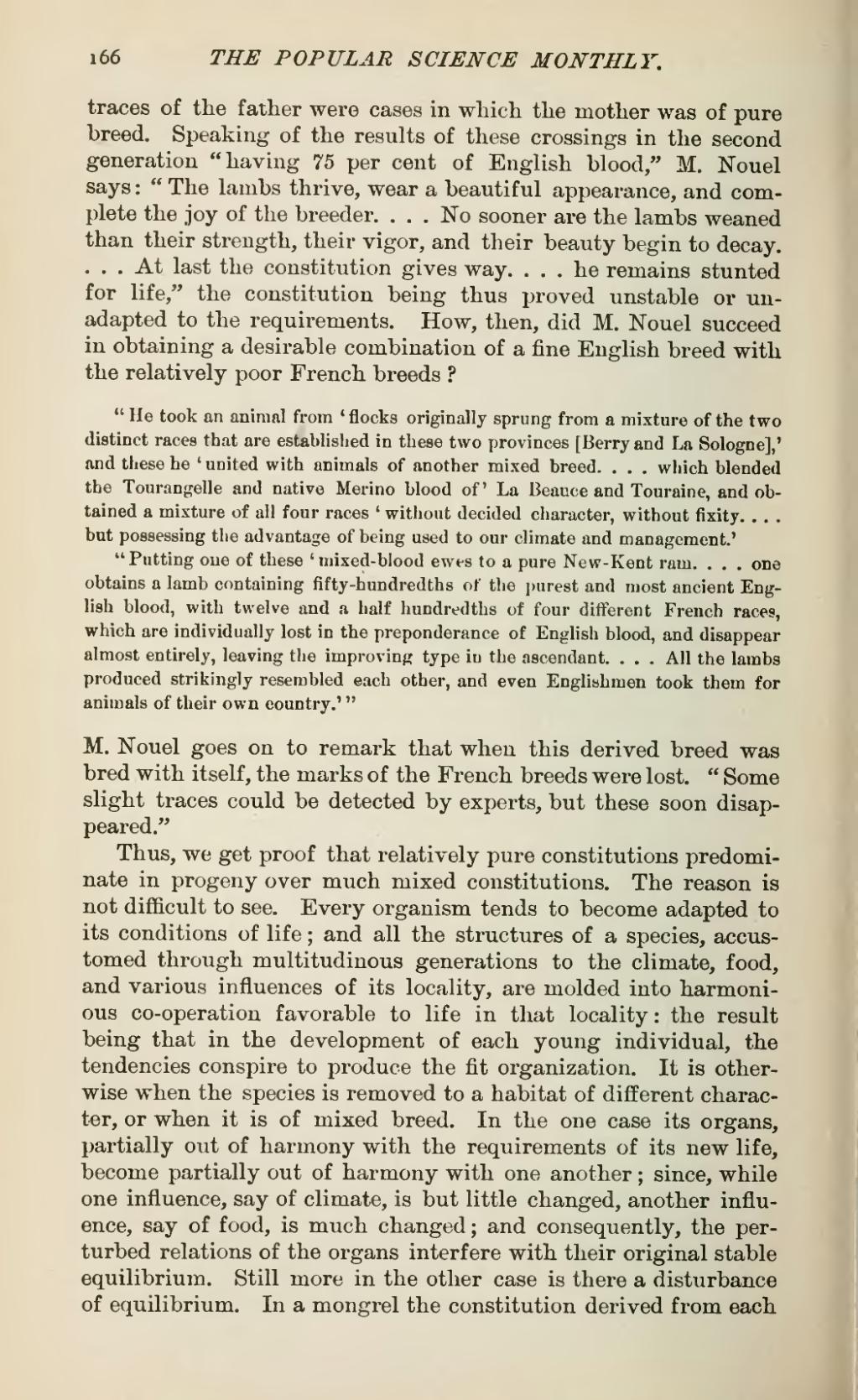traces of the father were cases in which the mother was of pure breed. Speaking of the results of these crossings in the second generation "having 75 per cent of English blood," M, Nouel says: "The lambs thrive, wear a beautiful appearance, and complete the joy of the breeder. . . . No sooner are the lambs weaned than their strength, their vigor, and their beauty begin to decay. . . . At last the constitution gives way. . . . he remains stunted for life," the constitution being thus proved unstable or unadapted to the requirements. How, then, did M. Nouel succeed in obtaining a desirable combination of a fine English breed with the relatively poor French breeds?
"He took an animal from 'flocks originally sprung from a mixture of the two distinct races that are established in these two provinces [Berry and La Sologne],' and these he 'united with animals of another mixed breed. . . . which blended the Tourangelle and native Merino blood of' La Beauce and Touraine, and obtained a mixture of all four races 'without decided character, without fixity. . . . but possessing the advantage of being used to our climate and management.'
"Putting one of these 'mixed-blood ewes to a pure New-Kent ram. . . . one obtains a lamb containing fifty-hundredths of the purest and most ancient English blood, with twelve and a half hundredths of four different French races, which are individually lost in the preponderance of English blood, and disappear almost entirely, leaving the improving type in the ascendant. . . . All the lambs produced strikingly resembled each other, and even Englishmen took them for animals of their own country.'"
M. Nouel goes on to remark that when this derived breed was bred with itself, the marks of the French breeds were lost. "Some slight traces could be detected by experts, but these soon disappeared."
Thus, we get proof that relatively pure constitutions predominate in progeny over much mixed constitutions. The reason is not difficult to see. Every organism tends to become adapted to its conditions of life; and all the structures of a species, accustomed through multitudinous generations to the climate, food, and various influences of its locality, are molded into harmonious co-operation favorable to life in that locality: the result being that in the development of each young individual, the tendencies conspire to produce the fit organization. It is otherwise when the species is removed to a habitat of different character, or when it is of mixed breed. In the one case its organs, partially out of harmony with the requirements of its new life, become partially out of harmony with one another; since, while one influence, say of climate, is but little changed, another influence, say of food, is much changed; and consequently, the perturbed relations of the organs interfere with their original stable equilibrium. Still more in the other case is there a disturbance of equilibrium. In a mongrel the constitution derived from each
